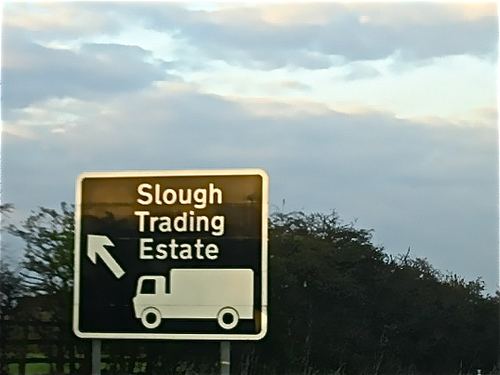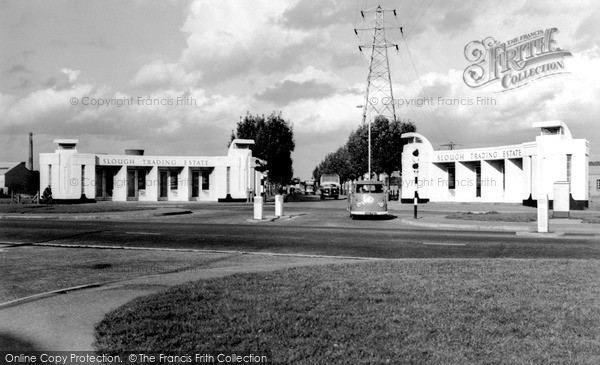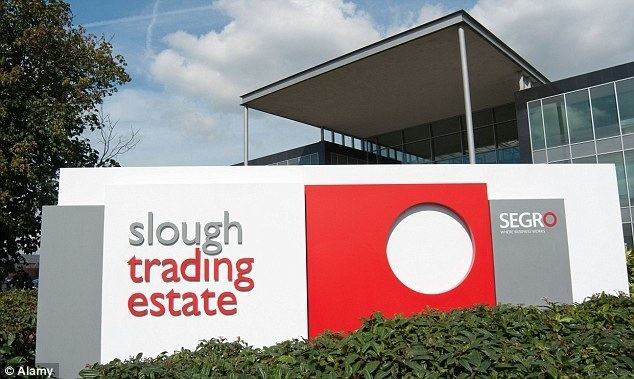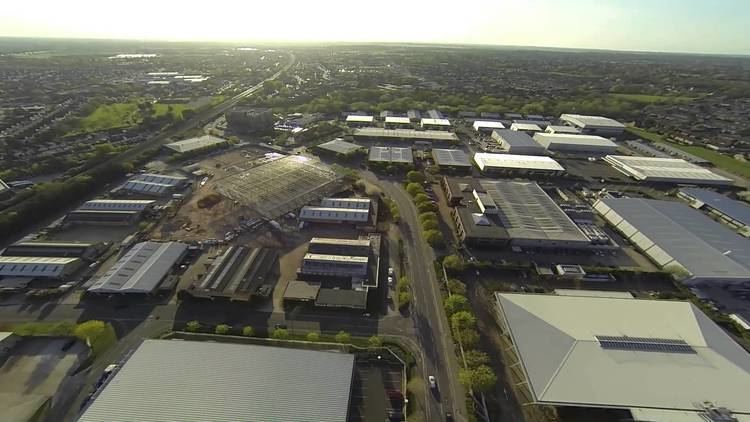 | ||
Dji f550 hexacopter over slough trading estate
The Slough Trading Estate founded in Slough in the south of Buckinghamshire in 1920, was an early business park in the United Kingdom. According to the estate's owners and operators, SEGRO (formerly Slough Estates plc), Slough Trading Estate consists of 486 acres (1.97 km2) of commercial property in Slough and provides 7,500,000 sq ft (700,000 m2) of accommodation to 500 businesses and has a working population of about 20,000 people. Slough Trading Estate is the largest industrial estate in single private ownership in Europe. There are over 600 buildings. The Estate is home to 400 tenants from countries including America, Italy, Japan, Germany and Korea. Companies using the park include, Fiat Group Automobiles UK Ltd, Centrica, Yell, Electrolux, GlaxoSmithKline, Mars Confectionery, Akzo Nobel, Virgin Media, O2, the datacentre operator Network-i and OKI Printing Solutions. It is also home to important small, medium and large businesses.
Contents

The estate's power station supplies heat and power to the entire industrial site, by burning wood chips and other biomass.

Langley Business Park and Langley Business Centre are other thriving business estates in Slough, with other companies, industries and enterprises found throughout the borough.

History

In June 1918, land to the west of Slough (then in Buckinghamshire) and adjacent to the Great Western Railway main line, mainly forming part of Cippenham Court Farm but also including the site of an isolation hospital, was bought by the government to form a motor repair depot for army transport. The depot was intended to receive broken down vehicles by train from the battlefront, repair them, and return them to service.

The project was not regarded as a success. The depot was believed to be so urgent that construction work (eventually by construction company Sir Robert McAlpine) began in July 1918 without harvesting the crops on the land, but the site was still under construction when the armistice was agreed in November 1918.

Although the depot's fundamental purpose went with the end of the war, General Jan Smuts proposed a post-war use for the depot which was implemented. Rather than scrapping the many army surplus vehicles, they were sent to Slough for repair prior to sale. Because of this use, for many years (until at least the 1980s), the site was known locally and colloquially as 'the dump', and at the time of the depot's development it was also known as 'The White Elephant'. Relations between management and workforce were so poor that at one point the entire workforce was sacked.

In April 1920, the Government Surplus Disposal Board sold the 2.7 square kilometre (600 acre) site and its contents (17,000 used cars, trucks and motorcycles, and 170,000 square metres (1.8 million sq ft) of covered workshops) for over seven million pounds. Sir Percival Perry, who had effectively established the British operations of the Ford Motor Company and who had been appointed Assistant Controller of the UK government's Agricultural Machinery Department during the war, and Sir Noel Mobbs, led the group of investors who acquired the depot, establishing the Slough Trading Co. Ltd.

Repair and sale of ex-army vehicles continued until 1925 when the Slough Trading Company Act was passed allowing the company (renamed Slough Estates Ltd) to establish an Industrial Estate. The existing army buildings were tenanted as factories, and additional units were built. Those on the Bath Road and Farnham Road frontages were designed with fundamentally uniform simple Art Deco offices on the front. Shared facilities were provided for workforce and employers, including a fire station, restaurant, shops and banks, a large community centre (1937) and the Slough Industrial Health Service (1947).
Early businesses established on the trading estate included Citroën (1926), Gillette, Johnson & Johnson and High Duty Alloys. In 1932, they were joined by Mars Ltd and Berlei (UK) Limited. In late 1933 the Slough Estates Journal reported there were 'more than 150 companies' based on the estate.
As the Trading Estate grew despite the depression of the 1920s and 1930s, people were attracted from all over the country to come and find work in Slough. But the fast increase in population resulted in a shortage of housing.
One solution was the construction of Timbertown, an estate of wooden single storey houses built adjacent to the site occupied by the Community Centre and now occupied by Herschel Grammar School.
From the outside, the houses looked like an army barracks, but inside they were spacious and comfortable – with 3 bedrooms, a bathroom, a big kitchen and a living room. At the start, Timbertown was well cared for a popular community, with a shop, social hut and even a Sunday school. But the buildings soon started to deteriorate. The wooden houses had never been intended to be permanent and Timbertown was finally demolished in the 1930s to make way for new buildings.
Until 1973, the estate had a railway directly linking the factories to Britain's railway system. A passenger service ran from Paddington and Slough stations to a separate station (accessed by a spur from the main line, separate from the freight access to the estate), until 1956.
In January 2008, the estate's power station was sold to Scottish and Southern Energy.
In popular culture
In 1937, English poet John Betjeman wrote his poem Slough in protest against the expansion of the Slough Trading Estate. The poem bemoans the loss of the area's rural character, and pillories English society's increasing consumerism and the sweatshop conditions caused by large-scale industrial development. An excerpt: "Come, friendly bombs and fall on Slough / It isn't fit for humans now...."
The Ricky Gervais/Stephen Merchant comedy The Office is set on Slough Trading Estate. The opening sequence shows several locations in Slough and the Crossbow House building on the Trading Estate where fictional paper merchants Wernham Hogg are supposedly located. It is also referenced in the song "Slough" from the 2016 film David Brent: Life on the Road.
